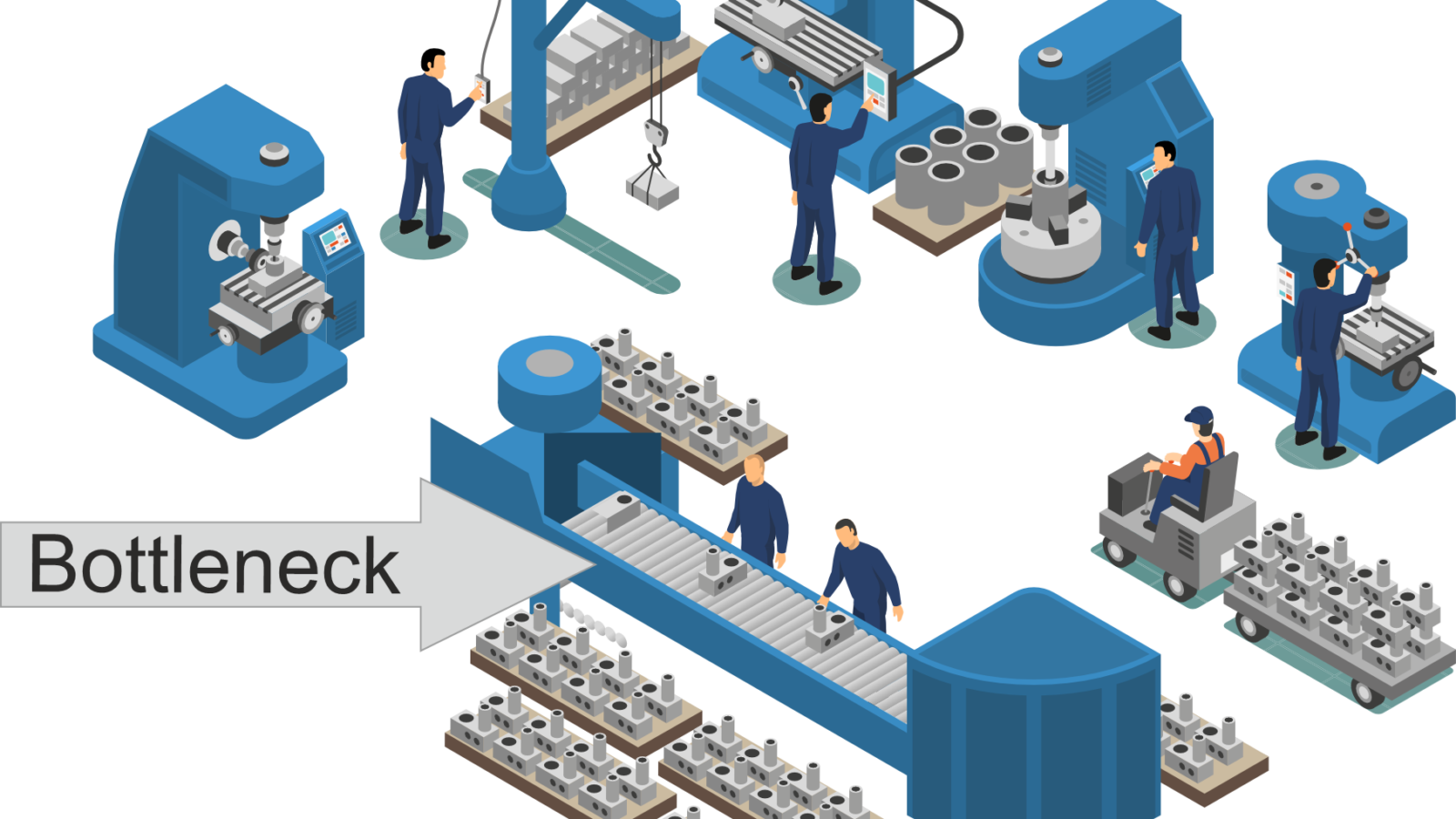When one machine fails, the working of other machines in the production line would not be beneficial. You certainly know the following situation: Although your production permanently works with extra hours and extra effort, the delivery times of your enterprise are often not observed. The reason can be bottlenecks in your production system. But what are bottlenecks, and why do they lead to such serious problems for the entire enterprise?
The explanation is straightforward: We refer to bottleneck when the demand surpasses the capacity of a specific manufacturing equipment. However, why do individual machines wield such an adverse influence on your entire production system? This inquiry can be aptly elucidated through a widely recognized analogy: the expedition of a scout troop.
A scout troop proceeds in a single-file formation along a narrow trail en route to their campsite. After a brief duration, it becomes evident that the spaces between the children widen considerably in certain spots, while they cluster closely together at other points along the trail.
The underlying cause lies in the disparate velocities at which the children are advancing. The group aspires to reach the destination in unison, and to address this, a rearrangement of the children’s order was implemented. Presently, the least brisk child leads the group, setting the pace for the entire team. The scout troop’s scenario mirrors our production system precisely. The throughput, and consequently, the production rate of bottleneck components, dictates the overall production rate for the entire system.
This underscores the necessity of aligning the production schedule primarily with the limitations of the bottleneck, which serves as the linchpin of the system. In a figurative sense, one could liken this to positioning the bottleneck at the forefront, much like the scout group example we discussed earlier
Failing to do so and overloading the production system with an excessive workload would inevitably lead to a traffic jam, resulting in elevated stockpiles and protracted processing times – akin to the elongating chain of scouts we discussed earlier.
This underscores the paramount importance of initially pinpointing the bottleneck or bottlenecks within the production process. Bottlenecks typically manifest as apparent indicators, given the delayed deliveries and heightened inventory levels tied specifically to bottlenecked products. Contemporary Smart Factory Planning (SFP) systems are instrumental in assisting us with bottleneck analysis and capacity shortages identification. Additionally, a suite of tools geared toward bottleneck identification is available within the realm of lean production management.
Once a bottleneck is discerned, the crucial question that arises pertains to the measures required for its removal. This aspect warrants significant attention, as the costs associated with appropriate remediation measures are generally substantially lower than the expenses incurred due to a bottleneck’s repercussions. Why is this the case? The bottleneck’s throughput governs the overall production rate – every hour lost at the bottleneck translates into a lost hour for the entire production system. Such lost productivity cannot be recouped. Consequently, the expenses linked to addressing the bottleneck should only represent a fraction compared to the broader costs incurred by the entire system’s inefficiency.
Strategies for eradicating production bottlenecks”
- Minimize defect rates during the production of critical bottleneck components
- Mitigate production interruptions
- Explore external collaboration or subcontracting
- Implement alternative manufacturing machinery
- Align production with current demand exclusively
- Tailor lot sizes to match requirements
In addition to strategies aimed at bolstering production capacity, it is imperative to align the production schedule or the entire system with the constraints imposed by the bottlenecks. The key challenge lies in orchestrating an optimal production pace for both manufacturing and assembly operations. The aim is to strike a delicate balance, ensuring that there are neither excessive product volumes nor insufficient output. This equilibrium allows for the maximal utilization of bottleneck resources while maintaining a steady and harmonious material flow, characterized by minimal inventory levels and truncated overall cycle times.
